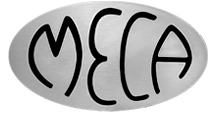Hybrid Coupler Basics
3dB, 90° Hybrid Couplers
A 3 dB, 90° hybrid coupler is a four-port device that is used either to equally split an input signal with a resultant 90° phase shift between output ports or to combine two signals while maintaining high isolation between the ports.

Figure 1
The basic configuration of a hybrid coupler is shown in Figure 1 which illustrates two cross-over transmission lines over a length of one-quarter wavelength, corresponding with the center frequency of operation. When power is introduced at the IN port, half the power (3dB) flows to the 0° port and the other half is coupled (in the opposite direction) to the 90° port. Reflections from mismatches sent back to the output ports will flow directly to the ISO port or cancel at the input. This is why hybrids are so widely used to split high power signals in applications where unwanted reflections could easily damage the driver device.
3 dB, 90° degree hybrids are also know as quadrature hybrids because a signal applied to any input, will result in two equal amplitude signals that are quadrant (90° apart). It also makes no difference which port is the input because the relationship at the outputs remains the same as these devices are electrically and mechanically symmetrical. This configuration ensures a high degree of isolation between the two output ports and the two input ports without unwanted interaction between them.
3dB, 180° Hybrid Ring Couplers
180° hybrid ring couplers (also called “rat race” couplers) are four-port devices used to either equally split an input signal or to sum two combined signals. An additional benefit of the hybrid ring is to alternately provide equally-split but 180 degree phase-shifted output signals.
The center conductor ring is 1½ wavelengths in circumference (or six ¼ wavelengths) and each port is separated by 90°. This configuration creates a lossless device with low VSWR, excellent phase & amplitude balance, high output isolation and match output impedances. The low loss, airline construction also makes the device a perfect choice for combining high power mixed signals.
Figure 2 shows all four possible port configurations and the resultant phase relationships at the outputs of the device. Again, it makes no difference which port is the input because the device is electrically and mechanically symmetrical.

Figure 2
Common Applications
Carriers are often faced with the challenge of adding next generation services while trying to keep CAPX equipment costs low. An economical solution to this problem is to combine two transmitters with a hybrid coupler to share one antenna, thus freeing up another antenna for the overlay. The hybrid coupler provides excellent isolation between the receivers and group delay is extremely small having no effect on current receiver calibration or operation.
Hybrid couplers can also be used to split signals from tower top amplifiers to BTS receivers (remember mismatches on the input side have no effect on the output ports).
For in-Building distribution systems, hybrids are useful in carrying multiple carrier inputs because the high degree of isolation between the two output ports and the two input ports without unwanted interaction between carriers .
Ordering
Whether you are designing a duplexer, combining amplifiers or just need a 90° phase shift with high isolation to avoid mixing signals, then MECA’s 705 series will help you achieve your objectives. MECA’s line of 3 dB, 90° hybrid couplers cover all wireless band applications from cellular through UMTS (0.800-2.200 GHz) with power levels to 500 watts. Additionally, your applications will benefit from low insertion loss and excellent VSWR.
MECA also offers a hybrid ring power divider/combiner series designed to cover wireless bands from 0.810-6.000 GHz with an average RF power handling capacity of 1,000 watts (5 kW peak). All models provide a power split of 3.00 ± 0.35 dB over the specified frequency range.
